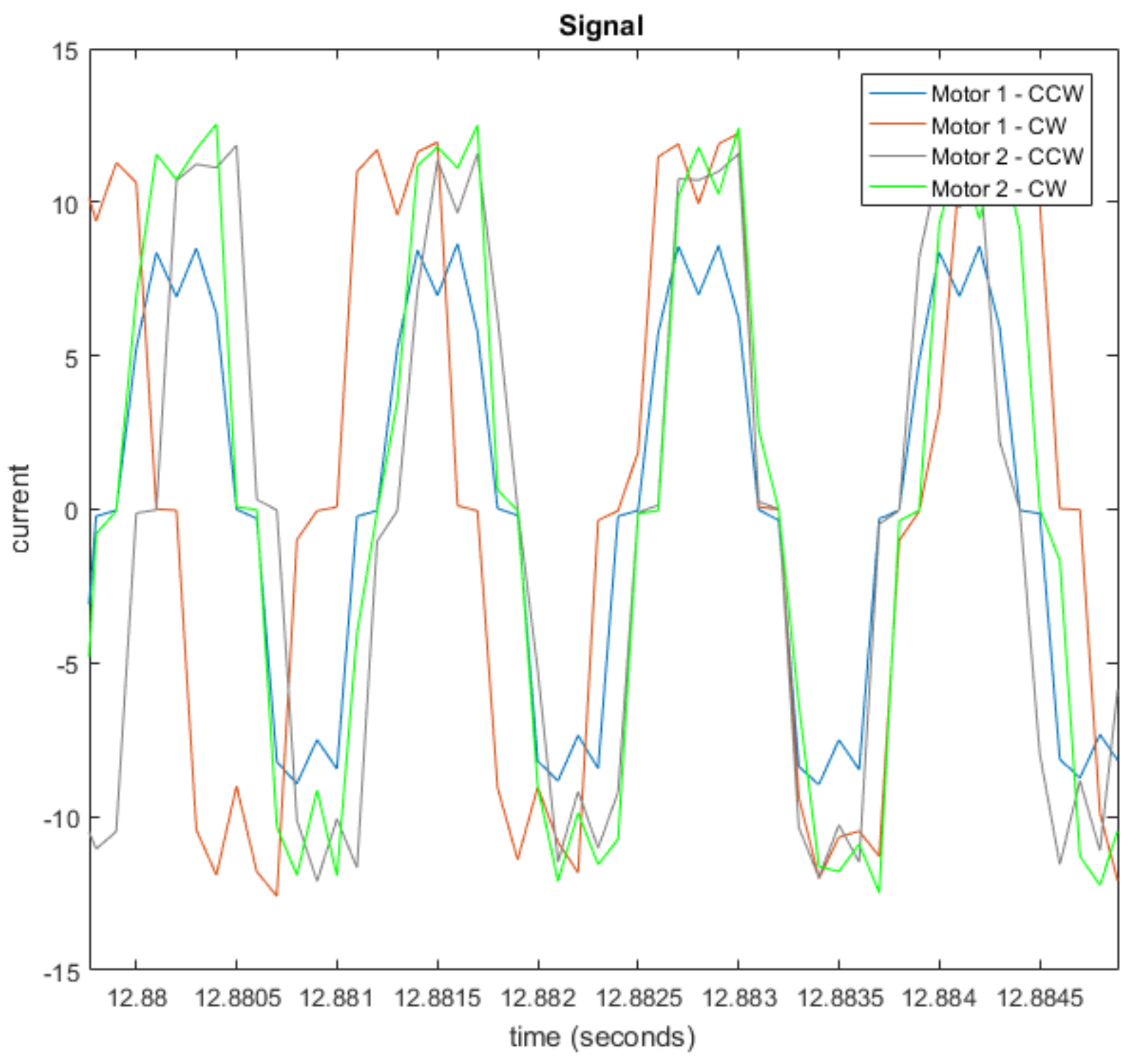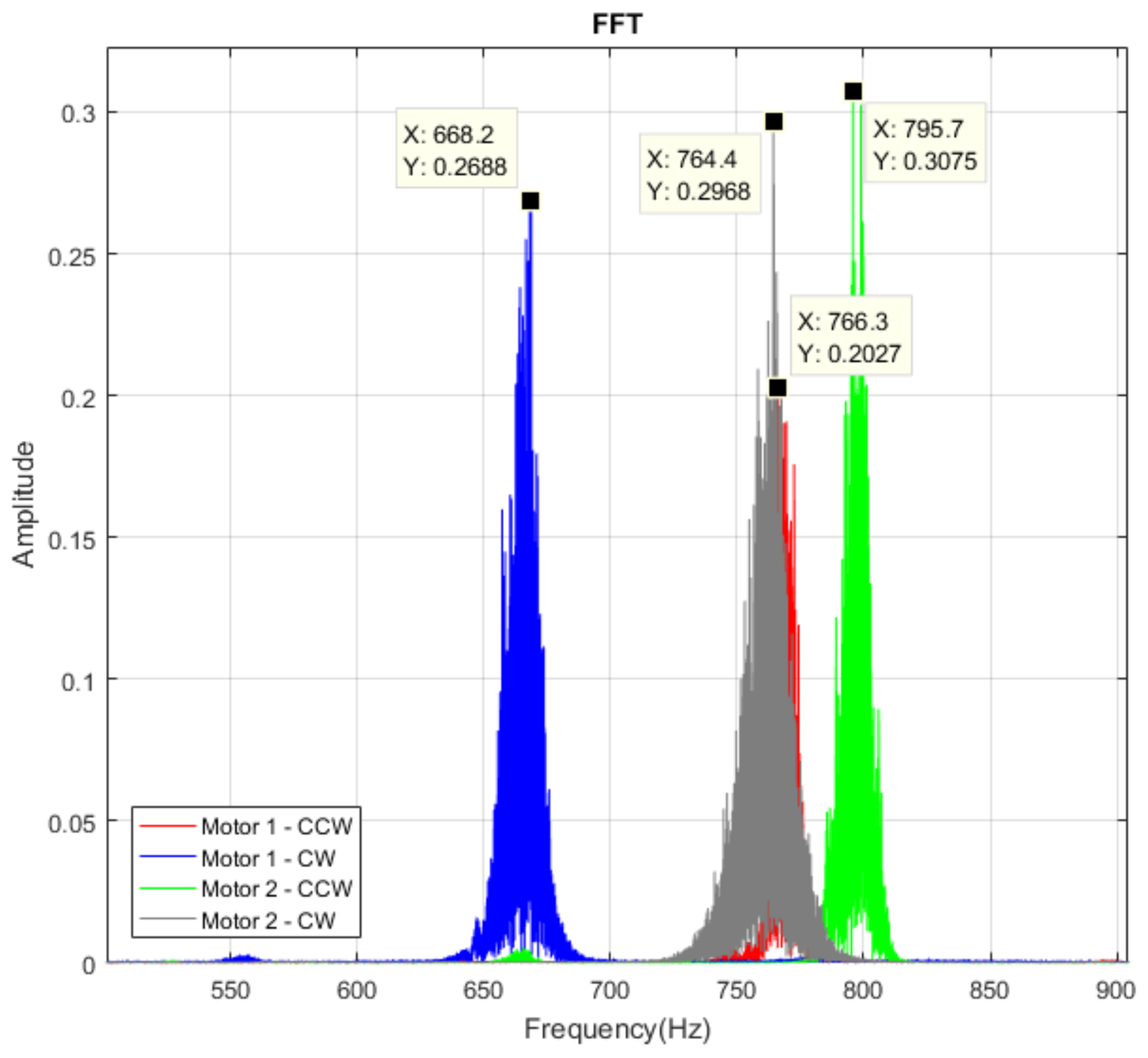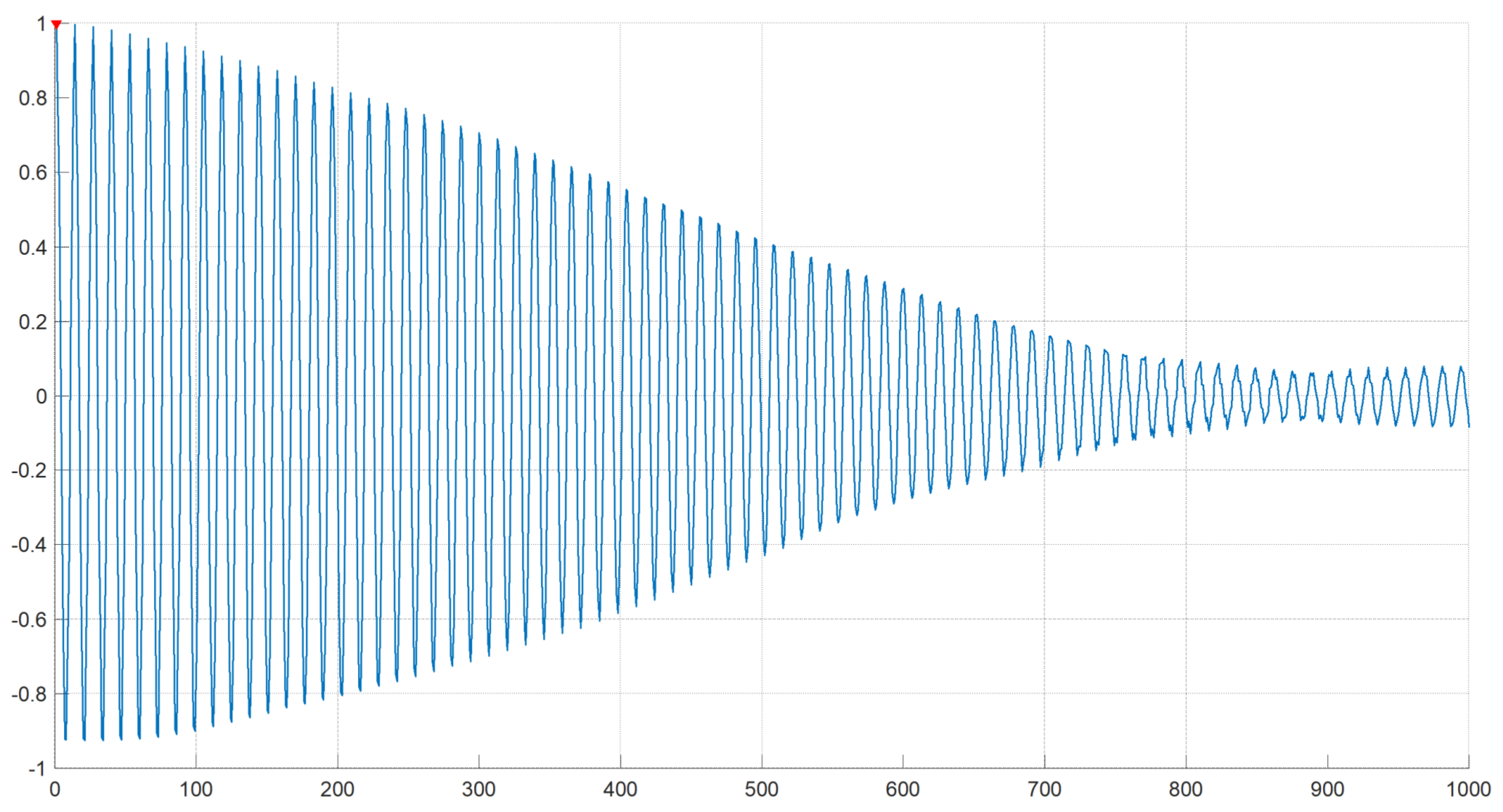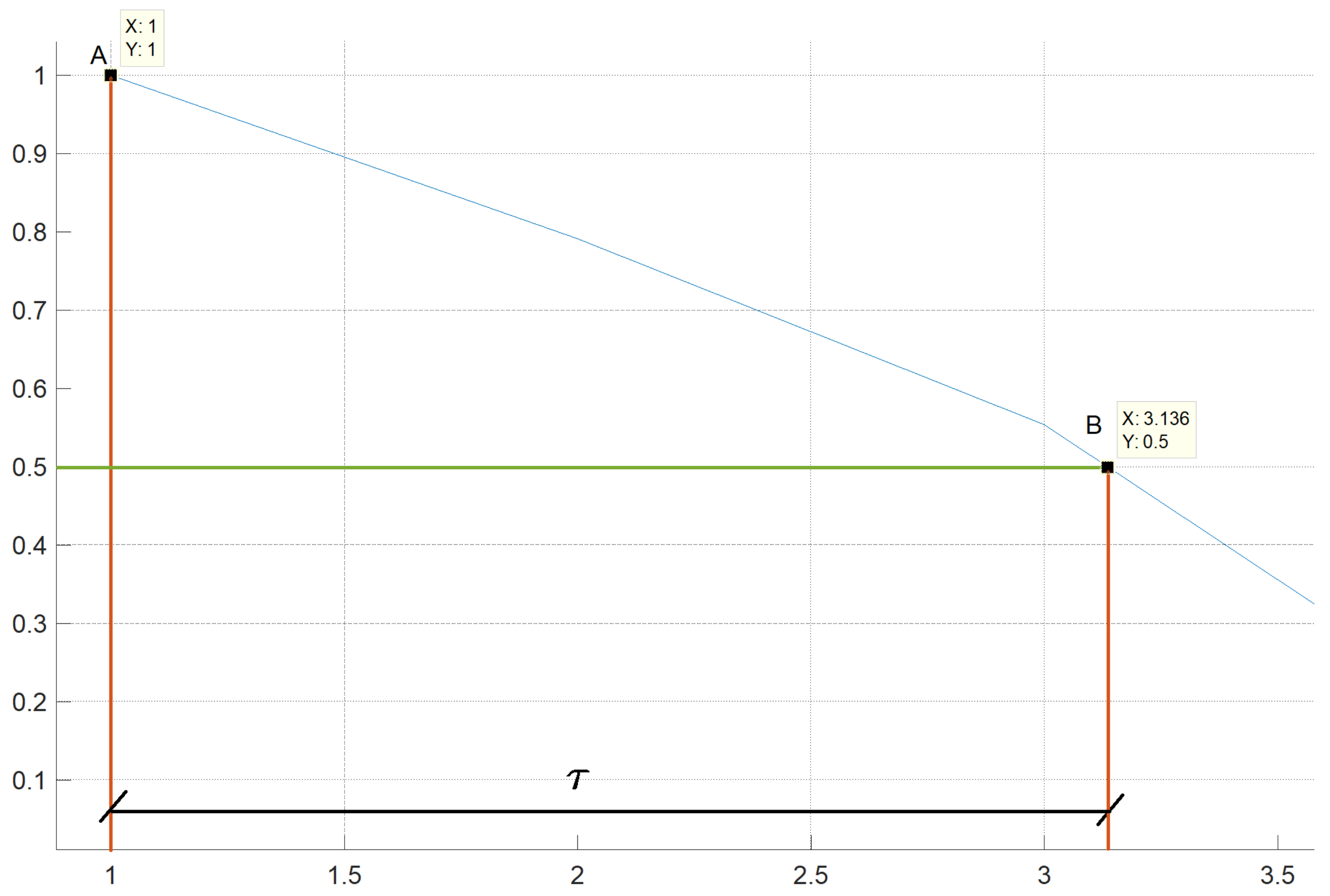In this section, the results are analyzed using two traditional approaches. First, using Fast Fourier Transform (FFT) and then using the analysis of chaotic behavior using the Correlation Length Coefficient (CLC). After that, In
Section 5 is possible to compare these results with SAC-DM results.
4.1. Fast Fourier Transform (FFT)
In the first stage of the experiment, the signal was collected through the current sensor connected to one of the phases of the motor.
Figure 2 presents one example of a signal acquired for each scenario. The signals are presented in Amperes. As can be seen, there is some difference in phase among the signals due to minimal differences in fundamental, or main frequency, as presented as following.
In this chart, it is possible to observe that the acquired signal presents trapezoidal characteristics and a phase difference between the scenarios, due to the essence of the BLDC motors, and some amplitude reduction for scenario S1 (motor1-CCW)
Once the data were collected and analyzed in the time domain, they were submitted to a Fast Fourier Transform (FFT) for analysis in the frequency domain. The signals in the frequency domain for each scenario are shown in
Figure 3.
The signal in frequency demonstrates that the fundamental, or main frequency of scenarios S1 (motor1-CCW) and S4 (motor2-CW) are similar, with 766.3 Hz and 764.4 Hz, respectively. The scenario S3 also presents a similar fundamental frequency, with 795.7 Hz. The value for Scenario S2 is less similar, with 668.2 Hz.
As expected, characteristics of the system (propeller, rotation, and defect in motors) might result in changes in the fundamental frequency of the current signal. These results will be used as a reference to the approach proposed in this work, where the characteristics of the system are analyzes based on the chaotic behavior of the signal.
4.2. Correlation Length Coefficient (CLC)
As an alternative to analysis using FFT, we apply the chaotic behavior analysis method using the correlation probability, which uses the initial correlation coefficient of the signal as a measure to quantify the chaotic behavior of the system. This technique is based on the fact that chaotic systems auto-correlate over time, different from random systems, which autocorrelation function tends to not converge.
For a signal which represents a stationary process with the mean and variance , and its covariance only depend on time difference .
To illustrate the computation of the samples using the Auto-correlation Function, consider the following distribution of the signal
. Where the time
; and
represents the quantity of samples at each time. Organizing the values of
per line in a matrix, we have
M:
Thus, the auto-correlation function (ACF) of the signal is defined as [
15]:
Applying the matrix
M (
7) in the function
(
8), we have the Auto-correlation matrix as result. However, to calculate the Correlation Length Coefficient (CLC) it is necessary to calculate the Partial Auto-correlation Function (PACF).
For this, first it is calculated
as the best linear estimation in the mean square sense of
:
where
with
is the mean squared linear regression coefficient. Then, the correlation condition
is called the Partial Auto-correlation Function (PACF), denoted as
.
Finally, the process returns the autocorrelation function (
) as shown in
Figure 4. The descending amplitude of the autocorrelation function during the time is an expected behavior from chaotic periodic systems.
Figure 5 presents the autocorrelation function presented in
Figure 4, but only for
X from 1 to 3.5. To prove that the system is chaotic, the length at half-height is calculated from
. Considering the points
and
B has
in
Figure 5. This value is called Correlation Length Coefficient (CLC)
, where:
The system can be considered chaotic if
observed in the autocorrelation function (
Figure 5) is the same as the obtained counting the density of maxima and applying Equation (
6). In
Figure 5 the observed value is
.
The Correlation Length Coefficient
obtained using the half-height technique (observed from autocorrelation function) are presented in
Table 3. It presents the correlation coefficients obtained from 4 different executions (E) for each of all scenarios(S). In addition, it presents the mean (
), variance(
) and standard deviation(
) of the obtained results.
The first contribution of this work is to demonstrate that the same behavior detected using FFT could be captured from the chaotic behavior of the system. From FFT it was presented that the fundamental frequency of scenario S1 is similar to S4, which are 766.3 Hz and 764.4 Hz (see
Figure 3), respectively. Scenario S3 is also not so different, with 795.7 Hz. The scenario with a greater difference in its fundamental frequency is S2, with 668.2 Hz. From
Table 3 it is possible to see the same pattern. S1 and S4 have the more similar correlation length coefficient calculated, which are about 2.087 and 2.116, respectively. Similar to FFT, S3 has a coefficient close the ones from S1 and S4, with 2.045. Also, S2 was the scenario with a more distant coefficient, with about 2.393. It important to note that the fundamental frequency in FFT and the correlation coefficient are inversely proportional.
Though the method is efficient to detect some anomalies in the system, a large amount of data is necessary and the computing cost to calculate the correlation function is high. As an alternative, we propose the application of a novel approach to calculate the correlation coefficient based on the density of maxima, which is the second and main contribution of this paper.











